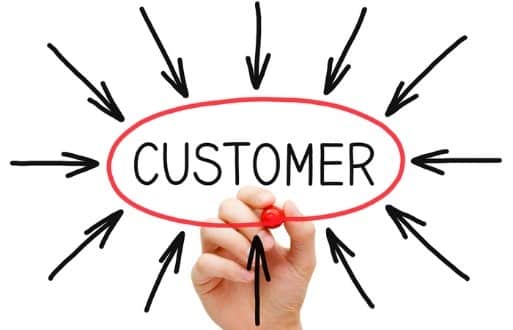
04 Oct 3 Pillars of a Successful Customer-Centric Strategy
Every organizations’ customers are fundamental to its strategic success. Therefore, there must be an all-encompassing consideration of the customer in everything you and your organization do.
The reason for this is because different digital tools and channels have dramatically transformed the way consumers engage with or purchase products and services. Consumers are now more empowered and often prefer to research online about a product or service before deciding to reach out to a sales rep. In addition, the fate of marketing campaigns and sales pipelines is now in the consumer’s hands as digital enables them to decide how to interact with our campaigns and communications. Despite this evident shift in power towards the consumer, many organizations are yet to adopt a customer-centric approach to their marketing strategies.
Although many organizations are still preoccupied with themselves (products, marketing, sales, and success), it is time to see everything through the consumer’s eyes. This is because the more you know your customers, the more success your organization will eventually achieve.
A good place to start seeing through the consumer’s eyes is asking yourself the following questions; what business problems do my customers face? What are they trying to achieve? What are their opportunities? In what environment do they operate? These are the questions that should form the basis of your marketing and sales tactics. The primary motivation should always be to identify and meet the needs of the customer.
Below are a number of pillars to adopt as you look to create a successful customer-centric strategy.
1. Influencers
The first essential step in modern marketing is establishing a relationship with industry influencers. These are the people your potential customers trust, listen to, and learn from. You not only increase your visibility when you associate with them, but you increase your credibility as well. Suppose an individual has authority in their industry. In that case, they have influence and can use that influence to amplify your message to become visible and credible to a larger audience you wouldn’t have been able to reach on your own.
2. Content
Consumers now actively search for knowledge, trying to find their solutions. Traditional tactics are no longer as effective as it once was because consumers now prefer to educate themselves by consuming digital contents via search engines and social networks.
Therefore, it is not only important for you to create content that will align with the different stages of the buying process but also resonates with specific personas because the kind of content that will incentivize them will vary based on their different characteristics and preferences.
It would be best always to tell stories with your content in different formats; the format should depend on the persona and where they are in the customer buying journey. In addition to creating content, you need to curate content as well. It is usually ideal that you curate the contents of the influencers you’re looking to build a relationship with. After creating your content, you need to share it in the spaces where your target audience exists, learn, and engage. Make your content so compelling that your audience will be willing to share.
3. Advocacy
Your best salespeople are not on your payroll. They are the customers who are willing to say good things about you. Today’s buyers have a louder voice, and you should be looking to leverage that to your brand’s advantage. In this modern marketing era, the best advocacy programmes are the ones that find different ways by which you and your organization can provide value to your customers. For instance, you can amplify their achievements on your social media handles if they are winning awards or if they will be speaking at an event.
To turn potential customers into advocates involves a deliberate effort to create lasting relationships with people. You need to create experiences that evoke emotion. Advocacy is reciprocal and earned. Be an advocate for your customers so your customer will want to advocate for you.
In conclusion, the most successful and effective marketing are those that are customer-centric. In a customer-centric organization, every process starts and ends with the customer. It is a culture imbibed by the organization, not an event or a department. The goal of every aspect of your organization should be to create an optimal customer experience for your customers. When you do this, your customer will, in turn, champion your success.
***Adapted from the Digital Marketing Institute.








No Comments